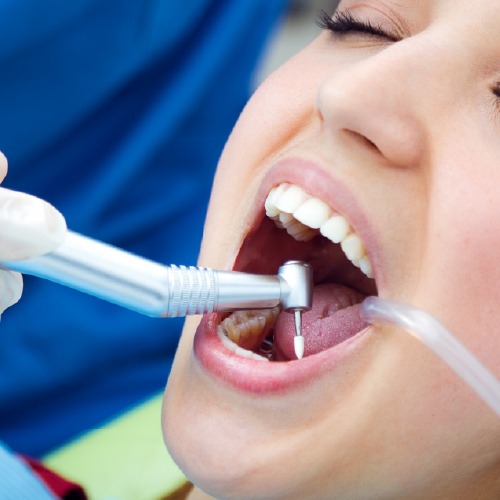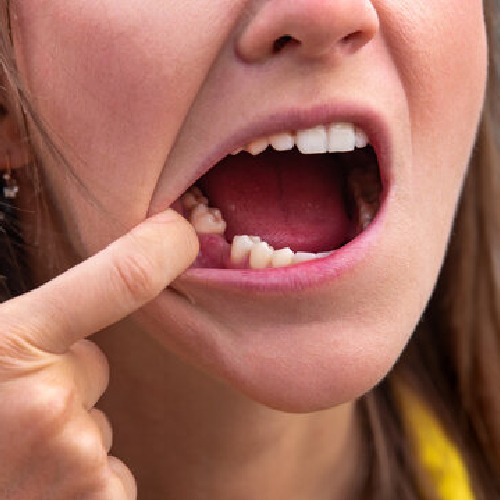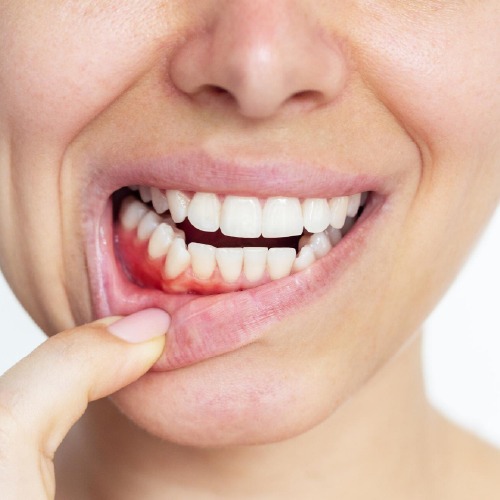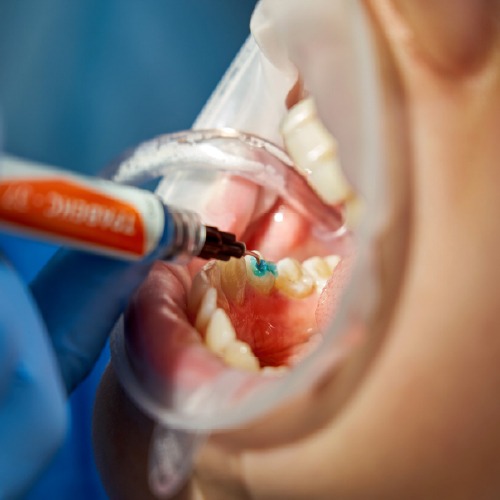Of course, It is necessary to brush and floss your teeth at home, but oral care should not be limited to it. When the issues with teeth have penetrated deeper, a deep tooth cleaning is required.
Deep cleaning is not the same as regular cleaning, which only focuses on the surface. Deep cleaning goes below the gum line to remove plaque and tartar that a toothbrush cannot reach. This procedure can only be performed in a clinic by a dental professional.
Let’s be honest! Brushing and flossing at home is great, but sometimes it’s just not enough. There are spots your toothbrush can’t reach, and when plaque builds up below the gum line, it needs professional help. That’s when deep tooth cleaning steps in.
If anyone has ever advised you to get one, you could be feeling a bit anxious. Hold your horse! it’s not as scary as it sounds. Just imagine it as if you were offering your gums a new beginning so your teeth could remain healthy and strong. In this guide, I’ll walk you through what deep tooth cleaning is, why it matters, and some real-life tips to make the whole process easier.
What Is Deep Tooth Cleaning, Really?
A deep tooth cleaning is sometimes referred to by dentists as scaling and root planing. It’s very similar to hitting a reset button for your gums. This procedure is quite different from a regular cleaning, which simply makes the tooth surface shiny. Instead, it’s a thorough cleaning performed beneath the gums, an area that often harbors plaque and tartar deposits and is difficult to see.
If bacteria remain on your teeth for too long, they will inflame your gums, make them swell, and can eventually break the bone that supports your teeth.
That’s why a dentist uses special tools to gently remove the buildup and smooth the roots. Your gums will be able to heal and get firmly attached again, much more easily on smooth roots.
So, if regular cleanings are like washing your face, deep tooth cleaning is more like a spa facial for your gums.

Do You Need a Deep Tooth Cleaning?
Not everyone does. But here are some signs it might be time:
- When brushing or flossing, your gums bleed a lot.
- There is a foul breath that keeps coming and going. Your gums appear swollen or reddened.
- Teeth are looked at as if they are “longer” than before (gums may be receding).
- You find that your teeth have become loose or that your bite has changed.
Such a visit to the dentist is very necessary if you have these signs. Keep in mind that pinpointing gum problems at the very beginning will result in less pain and money saving after a certain period of time.
Bleeding Gum When Cleaning Teeth
Let’s talk about bleeding gums when cleaning teeth. A lot of people simply dismiss the idea and think ‘Maybe I’ve brushed my teeth too hard. But bleeding gums should not happen every time you brush. It is a sign of gingivitis, which is the very first stage of gum disease, most of the time.
This is often where deep tooth cleaning makes the biggest difference. By removing the plaque and tartar irritating your gums, bleeding usually improves.
Quick tip: Change to using a soft toothbrush and be gentle, however, if you see blood, do not stop brushing. Not cleaning will only make the damage more severe.
Smelly Tooth Decay
We’ve all been around someone with bad breath, but if you notice smelly tooth decay in yourself, it’s more than just awkward. It’s a red flag!
Decay and bacteria that are trapped under the gums can cause a very unpleasant smell that toothpaste alone cannot eliminate. However, the good news is that a deep tooth cleaning is very effective in getting rid of the bacteria that cause the bad smell. But if the source of the problem is a cavity, then your dentist will probably suggest a filling or some other treatment in addition to the cleaning.
Tip for fresher breath: Try rinsing with plain water after meals, cut down on sweet snacks, and don’t ever let a bad smell from your mouth that lasts for a long time go by without checking it.
Sudden Tooth Sensitivity to Cold
Have you ever experienced a sharp pain when consuming ice-cold water or ice cream? Tooth sensitivity to cold is what that is, and it has the power to make the whole time miserable. Sometimes it may be only due to the thinning of the enamel, but in other cases, it is linked with gum disease.
Gums recession causes the roots of the teeth to be revealed. Roots are not as strong as enamel; therefore, they hurt more often. A deep tooth cleaning can help the gums reattach and protect those sensitive areas.
What Actually Happens During a Deep Tooth Cleaning?
In case you have never experienced one, you might be thinking what an experience it must be. Here is a gist of it:
- Checkup – The dentist examines your gums, measures the depth of the pockets, and explains the treatment.
- Numbing – Normally, you would be given local anesthesia to ward off pain.
- Scaling – The dentist removes the tartar from both parts of the teeth that are above and below the gum line.
- Root Planing – The roots are made smooth so that the gums can heal properly.
- Rinse & Protect – The use of antibacterial rinses or gels may be a part of the process to help infection prevention.
Sometimes the whole procedure can be done in one visit; however, if your gums are in a bad condition, it may take two sessions.
A deep tooth cleaning is a team effort: the dentist starts the healing, but you keep it going at home.
How Often Do You Need It?
For most people, deep tooth cleaning is only needed once or twice. After that, you return to regular cleanings every six months. If gum disease is severe, though, your dentist may suggest more frequent visits to keep things under control.
How to Prevent Gum Trouble After Deep Cleaning
After undergoing a deep tooth cleaning, you would definitely not want to repeat the experience anytime soon. Here are a few simple habits that can help you achieve that:
- Brush your teeth twice a day (using gentle strokes)
- Floss your teeth every day, even if it is annoying at the beginning
- Eat crunchy vegetables, which will help clean your teeth naturally
- Change your toothbrush every 3 months
- Keep dental appointments regularly
These little habits that you do each day accumulate and put money in your dental health bank instead of big dental problems later.
Professional Tooth Cleaning at Grace Dental
At Grace Dental, you’re not just another patient in the chair. The team focuses on comfort, clear explanations, and gentle care. Whether you’re dealing with bleeding gums when cleaning teeth, smelly tooth decay, or sudden tooth sensitivity to cold, you’ll get a professional deep tooth cleaning tailored to your needs with advanced techniques.
Wrapping It Up
Deep tooth cleaning might be scary from the outside, but in fact, it is the safest and healthiest care of your mouth that you can provide if you have a gum problem. The treatment will stop the bleeding, get rid of bad breath, and even lower sensitivity.
If you have bleeding gums while cleaning teeth, bad-smelling tooth decay, or sudden tooth sensitivity to cold, don’t wait; make an appointment immediately.
A fresh, healthy smile makes eating, laughing, and talking so much easier, and you deserve that confidence. Think of deep tooth cleaning as an investment not just in your teeth, but in your overall well-being.
References:
https://pubmed.ncbi.nlm.nih.gov/
https://www.mayoclinic.org/diseases-conditions/periodontitis/diagnosis-treatment



